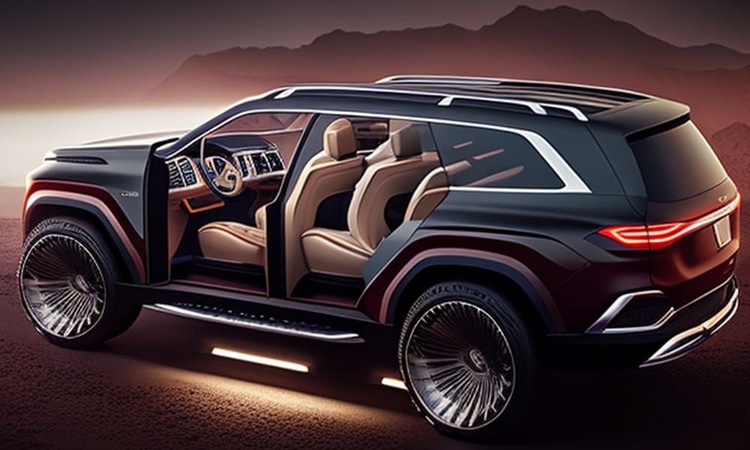Learn About BMW X3 Models, Pricing & Key Features In 2025 - A Comprehensive Guide
The 2025 BMW X3 continues the legacy of this popular luxury compact SUV with significant updates to its design, technology, and performance capabilities. As BMW's bestselling model in many markets, the X3 combines versatility, driving dynamics, and premium features in a package that appeals to a wide range of buyers seeking German engineering excellence in the competitive luxury crossover segment.

The 2025 BMW X3 enters the market with a blend of performance, luxury, and practicality that appeals to a wide range of drivers. As one of the brand’s most popular models, the X3 has evolved to meet changing consumer expectations while maintaining the driving dynamics BMW is known for. This year’s updates include refreshed exterior styling, enhanced interior materials, and the latest driver assistance technologies.
What Are The 2025 BMW X3 Pricing And Key Features?
Pricing for the 2025 BMW X3 varies depending on trim level and optional packages. The base X3 sDrive30i typically starts around $48,000, while the xDrive30i with all-wheel drive begins near $50,000. Mid-range models like the X3 M40i can reach approximately $60,000 to $65,000, and the high-performance X3 M Competition may exceed $75,000. These figures represent manufacturer’s suggested retail prices and do not include destination charges, taxes, or dealer-specific adjustments.
Key standard features across the lineup include a 12.3-inch digital instrument cluster, a 14.9-inch touchscreen infotainment system with wireless Apple CarPlay and Android Auto, and a comprehensive suite of active safety technologies. Higher trims add premium audio systems, panoramic sunroofs, adaptive suspension, and upgraded interior finishes. The X3 also offers various packages that bundle convenience features like heated seats, advanced parking assistance, and ambient lighting.
How Do New BMW X3 Models Compare In Specifications?
The 2025 X3 lineup offers multiple powertrain configurations to suit different driving preferences. The sDrive30i and xDrive30i models feature a turbocharged 2.0-liter four-cylinder engine producing approximately 248 horsepower and 258 lb-ft of torque. This engine pairs with an eight-speed automatic transmission and delivers a balance of efficiency and responsiveness.
For those seeking more power, the X3 M40i utilizes a turbocharged 3.0-liter inline-six engine generating around 382 horsepower and 369 lb-ft of torque. The range-topping X3 M Competition pushes performance further with approximately 503 horsepower from its tuned inline-six. All-wheel drive comes standard on M models, providing enhanced traction and stability. Acceleration from 0 to 60 mph ranges from about 6.0 seconds in base models to under 4.0 seconds in the M Competition.
Interior space remains competitive, with seating for five passengers and approximately 28 cubic feet of cargo space behind the rear seats, expanding to over 62 cubic feet with seats folded. Standard features include leather upholstery, power-adjustable front seats, and tri-zone automatic climate control.
What Are Current Luxury SUV Market Trends And 2025 BMW X3 Updates?
The luxury compact SUV segment continues to grow, with consumers prioritizing technology integration, safety features, and fuel efficiency alongside traditional performance metrics. For 2025, BMW has updated the X3 with a refreshed front fascia featuring redesigned headlights and a larger kidney grille. The rear receives updated taillights and a revised bumper design.
Inside, the cabin benefits from the latest iDrive 8.5 operating system, which offers improved voice recognition, over-the-air updates, and a more intuitive user interface. Sustainability has also become a focus, with increased use of recycled materials in interior trim pieces. The X3 now offers optional augmented reality navigation, which overlays directional arrows onto a live camera feed of the road ahead.
Market trends show increased demand for plug-in hybrid variants, though the X3 currently focuses on traditional gasoline powertrains. Competitors like the Audi Q5, Mercedes-Benz GLC, and Genesis GV70 continue to push technological boundaries, prompting BMW to enhance connectivity and driver assistance capabilities.
How Does The BMW X3 Perform In Fuel Efficiency And Design?
Fuel efficiency in the 2025 X3 varies by model. The base four-cylinder engines achieve an estimated 23 mpg city and 29 mpg highway with rear-wheel drive, or approximately 22 mpg city and 28 mpg highway with all-wheel drive. The more powerful M40i sees efficiency drop to around 19 mpg city and 26 mpg highway, while the M Competition delivers approximately 15 mpg city and 21 mpg highway. These figures represent estimates and actual mileage will depend on driving conditions and habits.
Design-wise, the X3 maintains BMW’s athletic proportions with a slightly elevated stance and muscular body lines. The front end features the signature kidney grille flanked by adaptive LED headlights. Profile views reveal a rising beltline and sculpted doors that add visual interest. The rear design incorporates horizontal taillights and dual exhaust outlets on performance models.
Interior design emphasizes driver focus, with controls angled toward the driver and a high center console that creates a cockpit-like feel. Material quality is high throughout, with soft-touch surfaces, real wood or aluminum trim options, and available Vernasca or Merino leather upholstery.
What Are BMW X3 Ownership Costs And Pricing Comparisons?
Ownership costs extend beyond the initial purchase price. Insurance for the X3 typically ranges from $1,500 to $2,500 annually, depending on driver history, location, and coverage levels. Maintenance costs are generally higher than non-luxury brands, with routine service visits averaging $200 to $400. BMW offers complimentary scheduled maintenance for the first three years or 36,000 miles, which can offset early ownership expenses.
Fuel costs will vary based on driving patterns and local gas prices, but owners can expect to spend between $2,000 and $3,500 annually on fuel for typical use. Depreciation represents a significant ownership cost, with luxury SUVs typically retaining 45-55% of their value after three years.
| Model | Starting Price Estimate | Engine Type | Horsepower | Fuel Economy (City/Hwy) |
|---|---|---|---|---|
| X3 sDrive30i | $48,000 | 2.0L Turbo I4 | 248 hp | 23/29 mpg |
| X3 xDrive30i | $50,000 | 2.0L Turbo I4 | 248 hp | 22/28 mpg |
| X3 M40i | $62,000 | 3.0L Turbo I6 | 382 hp | 19/26 mpg |
| X3 M Competition | $76,000 | 3.0L Turbo I6 | 503 hp | 15/21 mpg |
Prices, rates, or cost estimates mentioned in this article are based on the latest available information but may change over time. Independent research is advised before making financial decisions.
What Warranty Coverage Does The BMW X3 Include?
The 2025 BMW X3 comes with a comprehensive warranty package designed to provide peace of mind. The basic limited warranty covers four years or 50,000 miles, whichever comes first, protecting against defects in materials or workmanship. The powertrain warranty matches this coverage period, ensuring major mechanical components are protected.
BMW also includes roadside assistance for four years with unlimited mileage, covering services like towing, flat tire changes, and emergency fuel delivery. The corrosion perforation warranty extends for 12 years with unlimited mileage, demonstrating confidence in build quality. Additionally, the complimentary scheduled maintenance program covers all factory-recommended maintenance for three years or 36,000 miles, including oil changes, brake fluid, and inspections.
Extended warranty options are available for purchase, allowing owners to extend coverage beyond the standard period. These plans can cover additional components and provide continued roadside assistance, though costs vary based on coverage level and duration.
The 2025 BMW X3 represents a well-rounded entry in the luxury compact SUV market, offering a range of models to suit different preferences and budgets. From the efficient base models to the high-performance M variants, the X3 lineup provides options for various driving needs. Understanding the pricing structure, specifications, and ownership costs helps potential buyers make informed decisions in this competitive segment. As with any vehicle purchase, test driving different trims and comparing features against personal priorities remains essential to finding the right fit.




